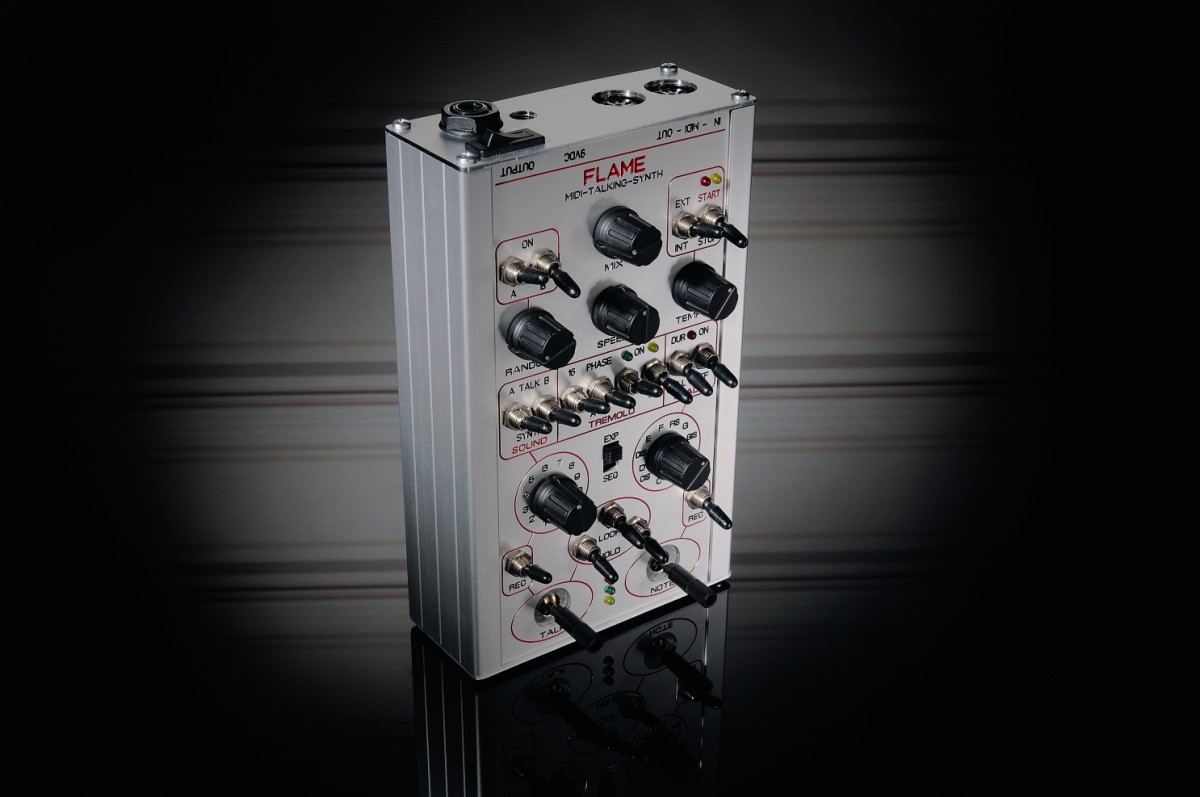MusicRadar Verdict
This inspiring piece of kit scores well for originality but it´s definitely a luxury item at this price.
Pros
- +
Tonally rich. Well built. Good for experimenting.
Cons
- -
Tricky to use at first. Not for everyone. Can't sing.
MusicRadar's got your back
The unit is built around two of the analogue Speakjet chips, produced by the US Company Magnevation LLC. Originally for talking tasks in the usual robot-toned voice, they´ve been further developed into making sound effects and various 8-bit blips and beeps.
Using two chips not only makes the unit tonally richer but they also provide a pseudo stereo type output on the (32kHz PWM output) regular quarter inch jack stereo socket but the first thing you notice about this unit is how many controls are jammed across its surface and how well it´s built.
Switching between chips is at a flick of a switch and a mix rotary lets you blend the sound of each chip together. It´s powered by a 9V DC adaptor and has both MIDI in and out, meaning the unit can also send MIDI messages, making it capable of controlling other devices too via its rotaries, switches and joysticks.
Dual mode
There are two modes the unit can operate in, Sequencer mode and Expander mode. Sequencer mode lets you operate the unit manually using the talk joystick to trigger sounds and internal MIDI clock controlled tremelo, which can interrupt sounds depending on the tempo set on the MIDI clock.
Where the joystick is positioned affects how sounds are triggered, with upwards movements triggering the individual sounds, words or vowel sounds and downwards movements triggering these sounds in sequence. The other joystick takes care of pitch and movements of both joysticks can be recorded when the ‘Rec´ switch is activated. It takes some time to get used to the way this synth works but a simple manual explains procedures.
Triggering the unit via MIDI is taken care of by the Expander mode and words are triggered via the keys on a controller keyboard or a sequence in your DAW (although you must output on MIDI channel 10). You can alter the pitch and speed while in MIDI mode, allowing words to be shaped more specifically.
Want all the hottest music and gear news, reviews, deals, features and more, direct to your inbox? Sign up here.
Retro tone
The actual sound quality this unit kicks out is great - traditionally retro in its tone and with some decent experimentation it can deliver some brilliant results. If you´re keen to get a Speak & Spell, it may be worth stumping up the extra cash for something much more usable and ultimately sonically superior.
This is a very specific kit and might not be for everyone. It´s not going to start singing over your tune, unless you have the patience for some heavy MIDI programming. But as a lovely sounding retro item that forces a decent amount of experimentation it´s a great purchase. It slots perfectly into the current ‘scene´ and when it´s blips and sound effects are ramped through some guitar pedals it can sound pretty cool.
MusicRadar is the number 1 website for music makers of all kinds, be they guitarists, drummers, keyboard players, djs or producers...
GEAR: We help musicians find the best gear with top-ranking gear round-ups and high- quality, authoritative reviews by a wide team of highly experienced experts.
TIPS: We also provide tuition, from bite-sized tips to advanced work-outs and guidance from recognised musicians and stars.
STARS: We talk to musicians and stars about their creative processes, and the nuts and bolts of their gear and technique. We give fans an insight into the actual craft of music making that no other music website can.

